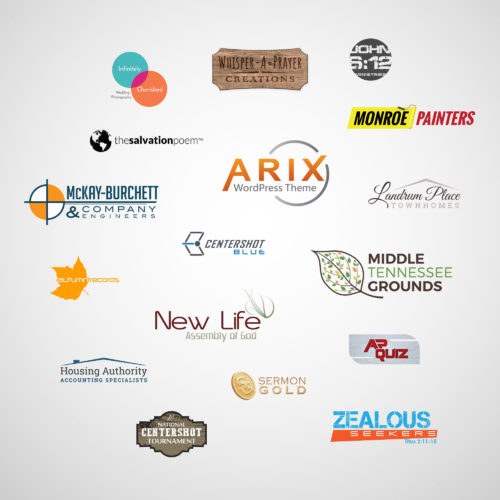
A cohesive and polished website design is not just a luxury but a necessity. Your website is often the first point of contact for potential customers or visitors, and it plays a pivotal role in shaping their perception of your brand. A well-designed website can captivate and engage users, instilling trust and credibility. In contrast, a poorly executed website can lead to frustration and missed opportunities.
A cohesive website design brings together various visual elements, user interface components, and content to create a harmonious and seamless user experience. It ensures that every page and interaction on your website reflects your brand identity consistently. With a strong visual identity and applying consistent design principles, you can convey professionalism, build brand recognition, and differentiate yourself from competitors.
So, whether you are building a new website or seeking to enhance your existing one, this article will serve as your guide to creating a cohesive and polished web presence.
1. Establish a Strong Visual Identity

When it comes to creating a cohesive and polished website, one of the first steps is to define your brand’s visual elements. These elements serve as the foundation for your website’s design and help establish a strong visual identity. Start by crafting a memorable logo that embodies your brand’s essence and aligns with your target audience. Consider the use of colors, typography, and imagery that reflect your brand’s personality, values, and industry.
Consistency is key to creating a cohesive website design. Once you have established your brand’s visual elements, it’s crucial to apply them consistently across all pages. Ensure that your logo is prominently displayed and positioned consistently throughout the website. Use uniform color schemes and typography choices to maintain a cohesive look and feel. Consistency in design elements helps users recognize and associate your website with your brand, fostering trust and familiarity.
Whitespace, also known as negative space, is the empty space between elements on a webpage. It plays a vital role in creating a clean and organized layout. Strategic use of whitespace allows the content and design elements to breathe, improving readability and visual hierarchy. Avoid cluttering your pages with excessive text or crowded visuals. Instead, embrace whitespace to create a sense of balance, focus, and elegance. It helps draw attention to important elements and improves the overall user experience.
2. Craft a Seamless User Experience
A crucial aspect of creating a cohesive and polished website is designing intuitive navigation menus and a logical site structure. Your website’s navigation should be easy to understand and navigate, allowing users to find information effortlessly. Consider using clear and descriptive menu labels and organizing your pages into logical categories. Additionally, incorporate a search function to enable users to quickly locate specific content.
Effective call-to-action (CTA) buttons are essential for guiding users towards desired actions on your website. To create a cohesive user experience, it’s crucial to ensure that your CTAs are consistent in design and placement across all pages. Use clear and action-oriented language that compels users to take the desired action. Additionally, employ visual cues such as contrasting colors or arrows to draw attention to the buttons.
In today’s mobile-driven world, optimizing your website for different devices is paramount. Implementing responsive design ensures that your website adapts and performs seamlessly on various screen sizes and devices, including smartphones, tablets, and desktops. A responsive website design not only enhances user experience but also improves your search engine rankings. Google values mobile-friendly websites and ranks them higher in search results. Therefore, ensure that your website’s layout, images, and content adjust smoothly to different screen sizes, providing users with a consistent and enjoyable browsing experience.
3. Create Consistent Content Presentation
Consistency in content presentation is crucial for a cohesive and polished website. When it comes to text and images, maintaining a consistent layout and formatting enhances readability and visual appeal. Use the same font styles and sizes across your website to establish a cohesive typographic hierarchy. Consistency in text formatting, such as alignment, spacing, and paragraph styles, creates a harmonious reading experience. Similarly, ensure that images are presented consistently in terms of size, aspect ratio, and placement.
Headings and subheadings play a vital role in guiding users through your content and establishing a clear hierarchy. Consistently use heading tags (H1, H2, H3, etc.) to structure your content and help search engines understand the organization of your information. Ensure that the hierarchy of headings is logical and that they are used consistently across pages. This not only aids in readability but also contributes to better SEO practices.
Consistency extends beyond visual elements; it also applies to the tone and voice of your written content. Establishing a consistent tone helps build brand identity and creates a cohesive user experience. Whether your content is formal, conversational, or playful, maintain a consistent tone throughout your website. Consider your target audience and align your language and writing style accordingly. Consistency in tone and voice fosters familiarity, trust, and brand recognition among your audience.
4. Pay Attention to Detail
Optimizing your website’s loading speed is crucial for providing a smooth browsing experience. Slow-loading pages can lead to user frustration and high bounce rates, negatively impacting your search engine rankings. To enhance website speed, consider techniques such as optimizing image sizes, minifying code, and leveraging caching mechanisms. Additionally, ensure that your hosting provider offers reliable and fast server performance.
Broken links and 404 errors can harm user experience and have a negative impact on your website’s SEO. It’s essential to regularly check for broken links and fix them promptly. Broken links not only frustrate users but also indicate to search engines that your website may have outdated or low-quality content. Utilize tools or plugins that scan your website for broken links and provide you with a comprehensive report. Once identified, update or remove the broken links to ensure a seamless user experience and maintain a healthy website reputation.
With the multitude of devices and web browsers available today, it’s crucial to ensure that your website displays and functions consistently across different platforms. Conducting thorough cross-browser and cross-device testing helps identify any design or functionality issues that may arise on specific browsers or devices. Test your website on popular web browsers such as Chrome, Firefox, Safari, and Edge, and ensure compatibility with both desktop and mobile devices.
5. Ensure Accessibility and Usability
Creating a cohesive and polished website involves considering the needs of all users, including those with disabilities. Designing with accessibility guidelines in mind ensures that your website is inclusive and usable by a broader audience. Follow the Web Content Accessibility Guidelines (WCAG) to provide equal access to information and functionality. This includes considerations such as ensuring proper color contrast for text readability and implementing keyboard navigation for users who cannot use a mouse.
Images are not only visual elements but also provide important context and information. To make your website more accessible, use descriptive alt text for images. Alt text describes the content of the image, allowing visually impaired users who rely on screen readers to understand its meaning. Additionally, use proper heading structure with semantic HTML tags to create a clear and logical reading order for both users and search engines. This improves accessibility, facilitates navigation, and enhances the overall user experience.
When users encounter errors while interacting with your website’s forms or performing actions, it’s essential to provide clear and concise error messages. Error messages should accurately describe the issue and provide guidance on how to resolve it. Additionally, implement form validations to ensure that users provide valid and properly formatted input. Real-time validation can help users catch errors as they occur, preventing frustration and improving the overall usability of your website.
6. Optimize for Search Engines
To ensure your website reaches its intended audience, it’s crucial to conduct thorough keyword research. Identify the keywords and phrases that are relevant to your content, industry, and target audience. Consider user intent and search volume when selecting keywords to incorporate into your website’s content. Strategically place these keywords in your page titles, headings, paragraphs, and image alt text. However, be mindful not to overdo it or engage in keyword stuffing, as this can have a negative impact on user experience and search engine rankings.
Meta titles and descriptions are crucial elements of your website’s search engine optimization. Craft compelling and concise headlines that accurately represent the content of each page. Incorporate relevant keywords while keeping the title within the recommended character limit of 50-60 characters to ensure it appears fully in search engine results. Similarly, write engaging meta descriptions that provide a summary of the page’s content and entice users to click through. Including keywords in meta descriptions can improve search engine visibility and attract more organic traffic.
Prepare for Launch
Applying these techniques to your own projects can help you create a cohesive and polished website that not only engages users but also ranks favorably on search engine result pages. Remember, a well-designed website not only enhances your brand’s image but also establishes a strong online presence, attracts more visitors, and increases conversions.
As technology and user expectations evolve, it’s important to continuously monitor and refine your website’s design and functionality. Keep up-to-date on the latest industry trends and updates, and be open to incorporating new techniques to improve your website’s cohesiveness and polish.
Investing time and effort into creating a cohesive and polished website is a long-term strategy that yields numerous benefits. It enhances user experience, builds trust with your audience, improves search engine rankings, and ultimately drives the success of your online presence.


